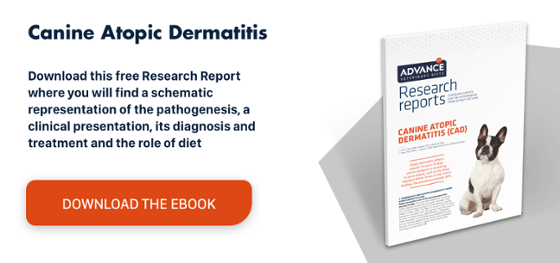Dermatophytosis: a review of treatments
Topical treatment
Topical therapy usually needs to be combined with systemic therapy. The most commonly recommended topical treatments are enilconazole, lime sulphur and a miconazole shampoo.
1. Enilconazole: At 0.2%, although it is not indicated for cats and licking should be avoided as it may be hepatotoxic.
2. Lime sulphur: This product is indicated for use in cats, although it can be hard to apply because of its unpleasant smell for both the cat and owner.
3. Miconazole shampoo: Various shampoos combine chlorhexidine with miconazole and they are effective in cats that tolerate frequent use (2 to 3 weekly baths).
Shaving is somewhat controversial; surgical shaving should be avoided to prevent irritating or damaging the skin.
Alopecic lesions in the dorsal metatarsal region of a cat approximately 6 weeks old rescued from the street.
Systemic treatment
Systemic therapy for dermatophytosis attacks the spores in the hair follicle.
The most popular systemic treatments are itraconazole and terbinafine.
1. Itraconazole: The dosing schedule is three cycles of 5 mg/kg/day for 7 consecutive days intercalated with 7 days of rest. Normally at least three 7‑day cycles are required, although this can be prolonged if there is a poor response. Blood tests must be used to monitor for potential hepatotoxicity. The active drug substance is indicated for use in cats.
2. Terbinafine: This can be useful in treatment-refractory cases. The dose is 10–30 mg/kg/24 h.
Environmental control
Infected animals should be isolated to avoid spreading it to other animals, people and/or the environment (the latest scientific literature suggests that the zoonotic potential is low, far below values considered previously).
Hairs around the house should be vacuumed and items associated with the dog’s hygiene, food, play, etc. disinfected with bleach to help prevent the spread of dermatophytosis.
Enilconazole spray can also be used in the environment.
Controlling the environment in catteries and cat shelters can be very difficult and becomes a real challenge.
Sometimes it is necessary to disinfect carpets, towels, bedspreads, car upholstery, etc.
Disease follow-up
Follow-up cultures should be performed if possible. The first is usually done at 2–3 weeks, then every 4 weeks thereafter using the same sampling technique as for the first culture.
Clinical cure normally occurs before the mycological cure.
Treatment usually continues for about 2 weeks after obtaining a negative culture.


